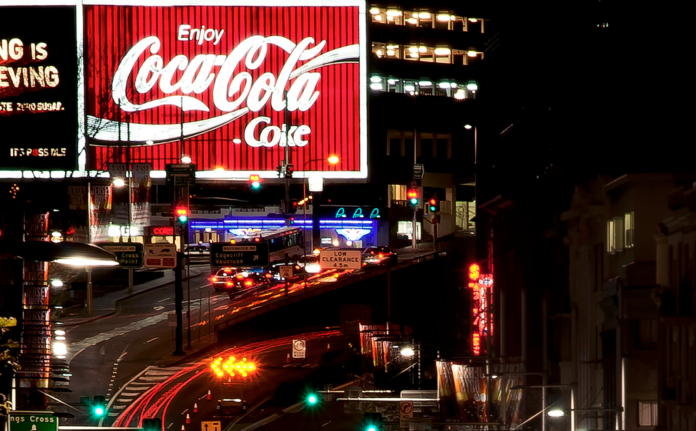In the world of marketing, there have been so very many forms of advertising. Given their endurance and relevance over the decades, they truly deserved to be referred to as traditional. The term itself holds great importance with traditional advertising still being very much relevant. Digital signage is a relatively young member of the group, but there is no doubt it is here to stay. It is yet to reach its peak as it consistently grows and expands at a rate greater than that of traditional advertising. That is only one of the reasons why it may be a better choice over traditional advertising methods. Here are a few more!
Digital Out-of-Home is more exciting
The world is not yet used to digital signage. Most traditional advertising methods have become quite easy to ignore. You don’t even hear many people complain about radio ads these days, let alone older methods such as pamphlets or an ad in a magazine. When a TV ad comes on, most of us take it as a sign to go to the bathroom, or make a quick trip to the kitchen to grab a snack. We might even be more interested in the “plot” of an ad itself to pass the time, rather than the actual product advertised. Digital signage is better in this regard because it still produces a surprising sensation. Indeed, it can annoy or it can impress. But it will not be ignored.
Both a good and bad thing, digital signage content is less uniform as creators still experiment a lot. They have that freedom, unlike highly professional, clean, and uniform TV ads. This results in a contrast of both bad and good digital signage content. The challenge, of course, is to be on the right side of that division!
More effective audience targeting
Ads delivered via TV, radio, newspaper, or other printed media, cast a wide net on as big an audience as they can reach. Within that huge net, somewhere, is your target audience. While not (yet) as precise as online ads, digital signage has the benefit of reaching that target audience more easily. This is based on the location of the display and the audience who sees it on a daily basis. Indoors, digital signage is even better with the audience easier to identify.
Digital screens in shopping malls can target shoppers with ads based on their demographics, purchasing behavior, and location within the mall. Digital signage in airports can deliver tailored messages to travelers based on flight information, destination, and dwell time in specific areas. As a result, this maximizes the effectiveness of ad campaigns by reaching the right people, at the best time and in opportune situations.
Digital signage is more adaptable than print advertising
Advertising in newspapers and magazines belongs to the older of the traditional advertising methods. Newspaper ads, for instance, have been a staple of advertising for centuries. Today, they are still quite effective. It’s very possible that, as long as newspapers exist, they will continue to be. Printed advertising of this sort can indeed be described as quaint. It evokes a sense of tradition and nostalgia. It’s perhaps the least invasive form of advertising.
From the marketing theory perspective, printed advertising is best used if you feel your audience is easy to localize this way. For a start, older demographics read newspapers rather than consume digital media. It can also be that the majority of your audience likes to read specific magazines or printed media. On a broader scale, there are few contexts where this is the case. Meanwhile, digital signage is better at focusing on audiences. Unlike printed media or most other traditional ad methods, it is significantly more adaptable and allows for testing with faster and accurate results.
TV ads are weakening
We mentioned TV ads before and how we’re getting used to ignoring them. It is also no secret that TV ads have been declining over the recent years with advertisers investing in other ad methods. This is to be expected to a degree, given the additional methods available. Online advertising being only one example. The underlying issue is the audience veering away from linear television. Viewers are increasingly canceling their subscriptions to multichannel TV services in favor of streaming services and other online media. This is referred to as “cord-cutting.” A study from 2021 found that cord-cutter households increase their internet usage by 22% and reduce payments to multiple-system operators by 50%.
Even without the cord-cutter dilemma, TV ads themselves can’t keep up with alternative ad methods that offer more concrete results. There was an insightful article on KelloggInsight on this topic, summing up the issue accurately: “Despite all the money that companies funnel toward TV commercials, those companies lack reliable methods to quantify how well the ads work.” Online ads can easily track how many people access them together with information about their demographic and if they take a desired action. Digital signage does this too to an extent. It is continuously evolving to become equally as precise.
Traditional billboards
The advantages over digital billboards are easy to spot when comparing them to traditional ones. Unlike their predecessor, digital billboards are animated, more effective at catching attention, and more flexible. They are even more profitable for those who sell ad space on digital billboards, as they can rotate multiple ads at once. Once again, the word “adaptable” comes to mind, and we can safely say that’s the best word to use when describing its advantages.
Digital billboards—or any digital signage sign, for that matter—can change content throughout the day. With this ability, the most important content can be scheduled for high-traffic hours. Ad space sellers can charge increased rates for these time slots.
Digital signage software changes everything
One of the many keys to success in any business is to automate what can be automated without loss of efficiency or quality. This is precisely where software comes into the mix, and why digital signage is better than many advertising methods. Software providers offer a variety of quality templates, apps, and tools to quickly whip up a digital sign. Many even offer pre-made content which only needs your input of key data. This automation is extremely beneficial for designing as well as managing content and implementing a content management structure. To experience it firsthand, try OnSign TV and explore the possibilities.
Automation is further growing through programmatic advertising in digital signage. Programmatic ad services function as a marketplace connecting advertisers and digital signage locations. With time, purchasing programmatic ads will lead to content primarily being shown to relevant target audiences. In essence, it will be a replica of methods present in online advertising but on digital signage.
Cover image by Hamish.







